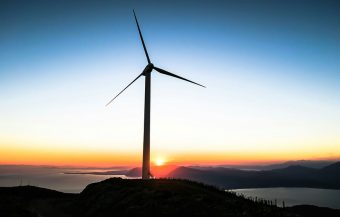
Much has been said recently about prosumers (consumer-producers) of electricity from renewable sources in Serbia, but little is still known. Promoting energy security and independence involves empowering citizens and businesses to produce energy for their needs, primarily through solar power, which helps reduce pollution and greenhouse gas emissions.
Lazar Ivanović, the chief economist at CEVES, an independent research and development organization, co-authors a study titled “Promoting Energy Security Through the Development of the Prosumer Market”. The study was conducted to provide a comprehensive overview of the prosumer market in Serbia. Alongside a detailed overview of the situation in the Western Balkans (Bosnia and Herzegovina, Montenegro, North Macedonia, Albania), Serbia was used as a case study focusing on the household sector, which is of greatest interest to most citizens.
Ivanović states that the development of the prosumer market in Serbia is very slow compared to wealthier and technologically advanced EU countries and neighboring countries with a similar level of development. Since 2021, when the new Law on Renewable Energy Sources came into force, until the end of May this year, according to Elektrodistribucija Srbije, the number of registered prosumers was 2,300 households and only three residential communities, with a total installed capacity of less than 19 MW, which is about 0.5 per cent of the planned capacities for 2023.
“When adding the economy to this, we get about 3,000 prosumers with less than 52 MW of electricity production capacity. On the other hand, significantly smaller economies like Albania and North Macedonia already had total prosumer capacities exceeding 119 MW and 129 MW, respectively, in the first half of 2023. Even Montenegro, with ten times fewer inhabitants than Serbia, managed to reach 4,000 prosumers with a total installed capacity of 43.5 MW by mid-May 2024,” says Ivanović.
IN FOCUS:
- We Are Actively Reducing CO2 Emissions in Our Operations
- Old Press In a New Guise
- Zagreb on the Path to Climate Neutrality
Energy Consumption Per Capita
According to Eurostat data for 2022, households in Serbia consume 165 kWh of electricity per capita per month, about 15 per cent more than the Western Balkans average and 24 per cent more than the EU average. Households in Montenegro consume the most—185 KWh, while those in Albania consume the least—100 KWh.

Regarding energy efficiency or intensity, the economies of the Western Balkans need about 56 per cent more energy on average to produce the same amount of GDP as the EU. Ivanović states that although the energy intensity of these economies, measured as total available energy divided by GDP, has fallen by 20 per cent since 2017, the EU managed to reduce it even more (by 25 per cent), worsening the region’s energy efficiency relative to EU member states. The main reason for higher energy intensity in the Western Balkans is a combination of low electricity prices and decades of insufficient investment in energy efficiency.
According to the study, the Western Balkans had a slightly higher share of RES in electricity production in 2022 (37.3 per cent net) than the EU (34.5 per cent). However, while the EU increased its RES share by eight per cent from 2016 to 2022, it decreased by about 1.5 per cent in the Western Balkans over the same period.
“When it comes to solar energy, it accounted for only about 0.6 per cent of total net electricity production in the Western Balkans in 2022 (about 7.7 per cent in the EU), but its share increased sixfold compared to 2016 (twice in the EU). The situation varies from country to country and is unfavorable for Serbia,” explains Ivanović.
The study’s results show that not only do all Western Balkan countries have a higher share of solar energy in total electricity production compared to Serbia, but North Macedonia, Bosnia and Herzegovina, and Albania also produce more solar energy in absolute terms (92, 114, 161 GWh net annually) compared to significantly larger Serbia (16 GWh).
Prepared by Mirjana Vujadinović Tomevski
Read the story in the new issue the Energy portal Magazine AGROSOLAR ENERGY AND RES.

